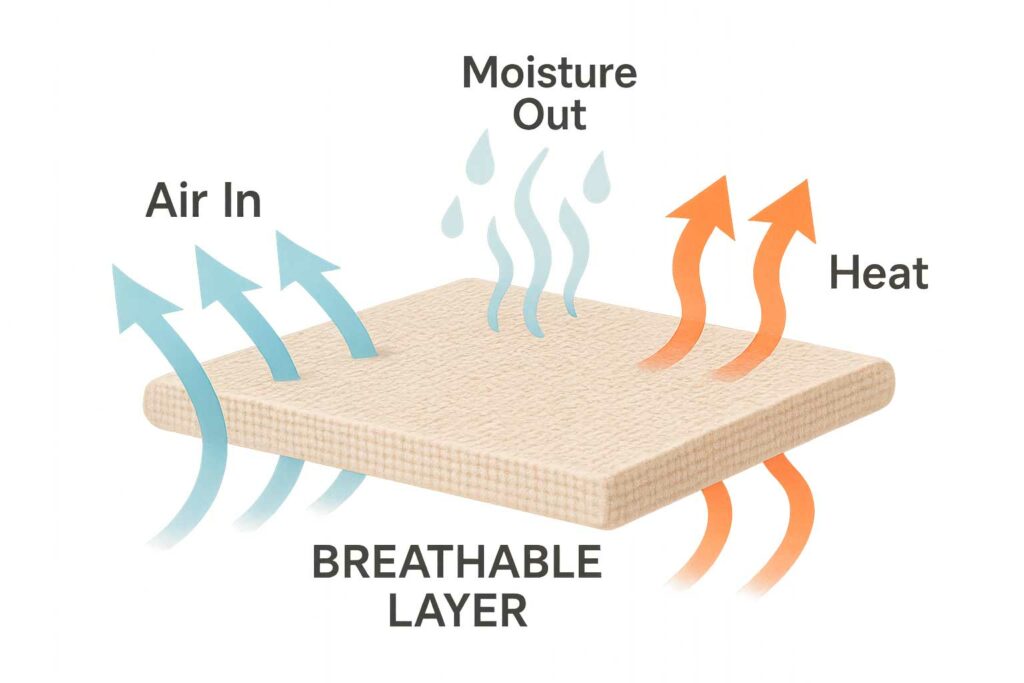Breathability Matters: Linen vs. Polyester for Hot Climates
At Big Z Fabric, we believe the right textile choice can transform not just your project, but your day-to-day comfort—especially when temperatures rise. In hot climates, breathability becomes a critical factor in deciding what fabric to wear or use. That’s why today, we’re comparing two of the most commonly debated materials: linen and polyester.
Let’s break down their performance in heat, moisture management, and overall comfort.
When it comes to choosing the right fabric for warm-weather clothing, upholstery, or accessories, one word rises to the top of the priority list: breathability. But what does that really mean, and how do different fabrics compare when the temperature climbs?
In this post, we’ll explore what breathability is, why it matters, and take a closer look at two common fabrics—linen and polyester—to help you make the best decision for your hot-weather needs.
What Does "Breathable" Fabric Really Mean?
Breathability refers to a fabric’s ability to allow air and moisture (sweat) to pass through it. In hot, humid conditions, breathable fabrics help regulate your body temperature, keeping you cooler and drier.
At Big Z Fabric, we assess breathability based on:
Weave openness
Fiber composition
Wicking capacity
Drying time

Linen: Nature’s Cooling Fabric
Linen, made from the flax plant, is one of the oldest and most respected natural fabrics in the world,especially in warm-weather cultures.
Why Linen Works So Well in the Heat:
Its loose weave and hollow fibers allow excellent airflow.
Linen naturally absorbs moisture and dries quickly, helping your skin stay dry.
It’s antibacterial, hypoallergenic, and biodegradable—perfect for eco-conscious creators.
Keep in Mind:
It wrinkles easily—part of its charm, but not ideal for all.
Linen can feel slightly stiff at first, though it softens beautifully over time.
Polyester: Durable but Less Breathable
Polyester is a synthetic fiber made from petroleum-based products. It’s known for its strength, wrinkle resistance, and affordability,but breathability is not its strong suit.
The Advantages:
Lightweight and durable, it resists wrinkles and holds its shape.
Engineered polyesters, like athletic blends, offer excellent moisture-wicking performance.
It’s cost-effective and easy to care for.
The Drawbacks:
Traditional polyester doesn’t breathe well.
It tends to trap heat and moisture, creating discomfort in high temperatures.
Not biodegradable, making it less sustainable.
Outerwear or sportswear with tech weaves
Everyday upholstery where durability matters
Budget-conscious applications
Which Fabric Is Best For The Heat?
When choosing fabric for summer fashion, home décor, or even upholstery in a sunroom, think beyond looks and consider how the material will feel when the temperatures rise. Breathability can make all the difference between feeling refreshed or drenched in sweat.
Whether you’re sewing your next favorite summer shirt or picking upholstery for a breezy patio, choosing breathable fabric like linen can keep things cool—literally.
Looking for high-quality breathable fabrics? Explore our collection at Big Z Fabric—we offer a variety of summer-ready materials, including linen, cotton, rayon blends, and lightweight weaves designed with comfort in mind.
If breathability is your top priority,choose linen.
Its natural properties offer unmatched comfort in hot climates.
But if you need durability, wrinkle resistance, and affordability, polyester still has its place,just make sure it’s engineered to wick moisture.
Whatever your needs, Big Z Fabric carries a wide selection of both fabrics, in multiple colors, weights, and weaves,so you can stay cool and creative all year long.
